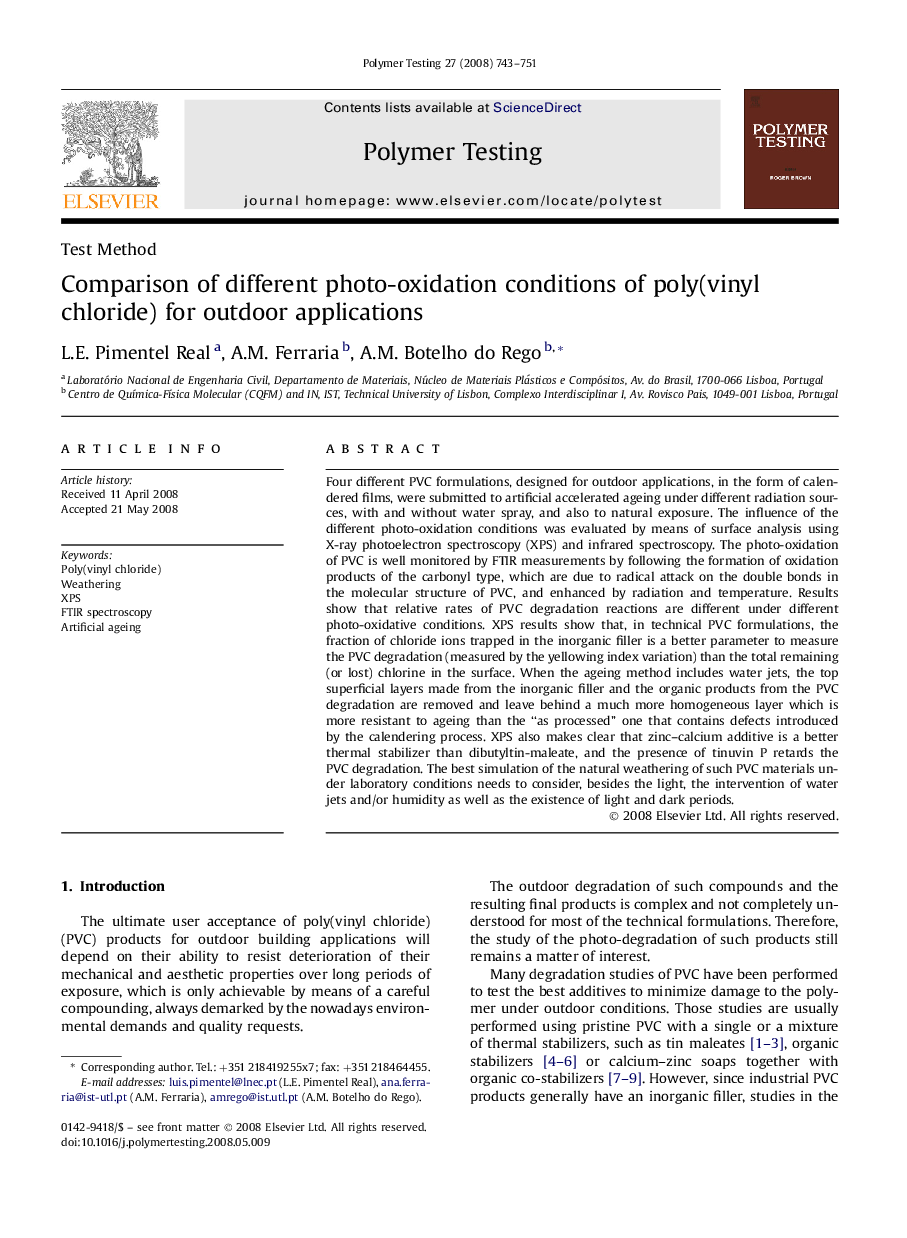| کد مقاله | کد نشریه | سال انتشار | مقاله انگلیسی | نسخه تمام متن |
|---|---|---|---|---|
| 5207428 | 1382350 | 2008 | 9 صفحه PDF | دانلود رایگان |
عنوان انگلیسی مقاله ISI
Comparison of different photo-oxidation conditions of poly(vinyl chloride) for outdoor applications
دانلود مقاله + سفارش ترجمه
دانلود مقاله ISI انگلیسی
رایگان برای ایرانیان
کلمات کلیدی
موضوعات مرتبط
مهندسی و علوم پایه
شیمی
شیمی آلی
پیش نمایش صفحه اول مقاله

چکیده انگلیسی
Four different PVC formulations, designed for outdoor applications, in the form of calendered films, were submitted to artificial accelerated ageing under different radiation sources, with and without water spray, and also to natural exposure. The influence of the different photo-oxidation conditions was evaluated by means of surface analysis using X-ray photoelectron spectroscopy (XPS) and infrared spectroscopy. The photo-oxidation of PVC is well monitored by FTIR measurements by following the formation of oxidation products of the carbonyl type, which are due to radical attack on the double bonds in the molecular structure of PVC, and enhanced by radiation and temperature. Results show that relative rates of PVC degradation reactions are different under different photo-oxidative conditions. XPS results show that, in technical PVC formulations, the fraction of chloride ions trapped in the inorganic filler is a better parameter to measure the PVC degradation (measured by the yellowing index variation) than the total remaining (or lost) chlorine in the surface. When the ageing method includes water jets, the top superficial layers made from the inorganic filler and the organic products from the PVC degradation are removed and leave behind a much more homogeneous layer which is more resistant to ageing than the “as processed” one that contains defects introduced by the calendering process. XPS also makes clear that zinc-calcium additive is a better thermal stabilizer than dibutyltin-maleate, and the presence of tinuvin P retards the PVC degradation. The best simulation of the natural weathering of such PVC materials under laboratory conditions needs to consider, besides the light, the intervention of water jets and/or humidity as well as the existence of light and dark periods.
ناشر
Database: Elsevier - ScienceDirect (ساینس دایرکت)
Journal: Polymer Testing - Volume 27, Issue 6, September 2008, Pages 743-751
Journal: Polymer Testing - Volume 27, Issue 6, September 2008, Pages 743-751
نویسندگان
L.E. Pimentel Real, A.M. Ferraria, A.M. Botelho do Rego,